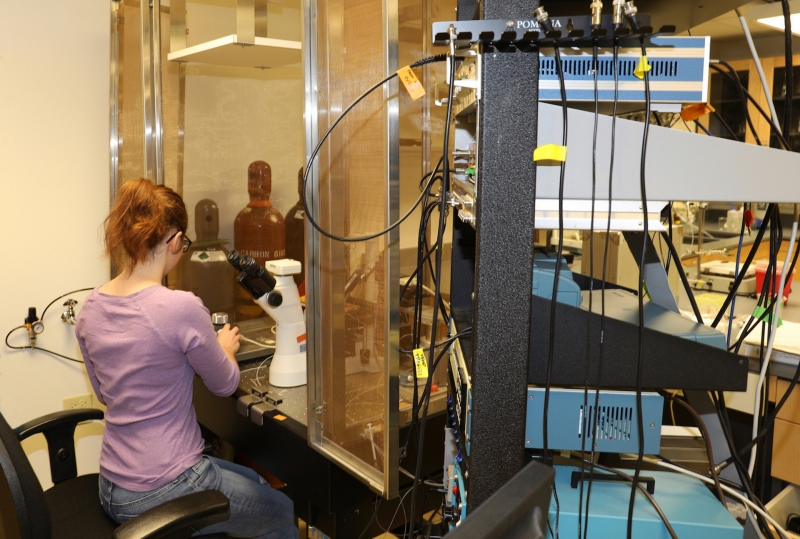Biophysics is a highly interdisciplinary science. Research in biophysics of ion channels combines elements of biology, physiology, physics, chemistry, electronics, mathematics and computer science. The Biophysics Lab in our department is devoted to studies of ion channels in cellular membranes. Ion channels are proteins regulating the flow of certain ions, like K+, Na+, or Ca2+, in and out of the cells of living organisms. This is a very active, very exciting research area, involving various experimental techniques and data analysis methods.

The recording apparatus is shielded from vibrations through a vibration-isolation table, from electromagnetic noise through a Faraday cage, and the temperature is controlled. This technique requires substantial skills from the operator and its success depends to a large degree on these skills. This is why it is usually taught to graduate students. Our physics undergrads have a track record in becoming successful patch-clampers.
Recent addition to the Biophysics Lab is the Nanion Port-a-Patch automated patch-clamping instruments. It has been designed as a high-throughput device allowing rapid characterization of the effect of various compounds on ion channels. In our lab its simplicity is used to limit the time required to train undergraduate students in patch clamping. Some of the most recent projects include the study of conductance hysteresis in voltage-gated ion channels and of the effect of polar/non-polar nanoparticles on ion channel gating. The use of Port-a-Patch for research involving undergraduate students has been featured in the Nanion newsletter.
The supporting infrastructure in the Biophysics Lab include a pipette manufacturing station with a pipette puller and a microforge, a cell culturing station with a CO2 incubator and class B biosafety cabinet, an array of centrifuges, microscopes, refrigerators (ultra-low -80 C freezer, and liquid nitrogen storage), water purification system, autoclave, UV spectrophotometer etc. Data acquisition and analysis is done with HEKA Patchmaster and Fitmaster software and all further modeling is done on Matlab. Student researchers become proficient in using all these instruments, devices, and software packages.
More equipment available in the Biophysics lab include:
-
Pipette fabrication (pipette puller, microforge)
-
Cell culture and oocyte preparation (class 2 sterile hood, CO2 incubator, nanoinjector)
-
Molecular biology (centrifuges, UV spectrophotometer)
-
General purpose (autoclave, liquid nitrogen storage tank)


